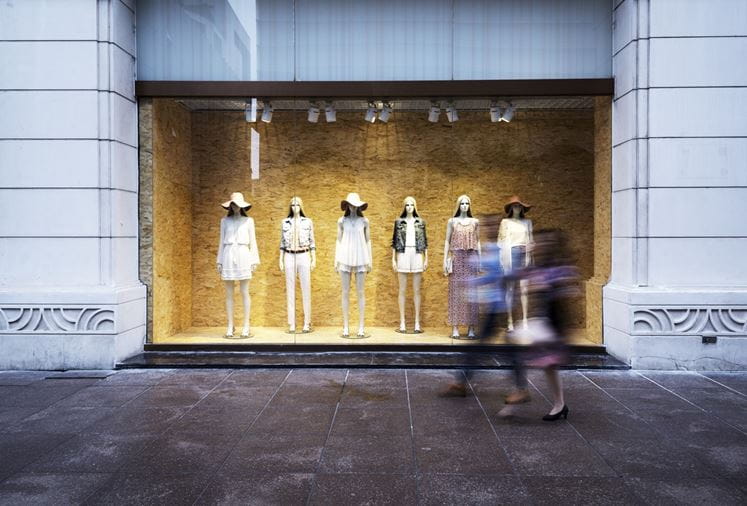Canadian Retail Sales Growth For 2023 Expected To Be ‘Modest’ Following Record-Breaking Numbers Two Years Prior

Canadian Retail Sales Growth For 2023 Expected To Be ‘Modest’ Following Record-Breaking Numbers Two Years Prior
After a difficult 2020, Canadian retail sales broke a new record in 2021 and did so again in 2022.
The question is, “will 2023 follow suit?” With consumer confidence declining and the gap between household debt and savings widening, retailers face a few hurdles, says a new report by Colliers Real Estate Management Services.
The ‘Seeing the forest for the trees: modest retail growth in 2023’ tenant survey report.

The report has four key takeaways:
- Tenants’ desire to increase retail space suggests already low vacancy rates will decline by one per cent nationally over the next 18 months;
- Retailers indicate that 2022 was slightly profitable for their business, with the majority expecting a modest increase in profitability in 2023 due to declining inflation;
- Five lessons from profitable retailers:
(i) have physical stores,
(ii) build an e-commerce platform,
(iii) connect the physical store with the e-commerce platform,
(iv) incentivize in-store pick-up, and
(v) share the cost of returns with customers;
4. While retailers are predicting modest growth, abnormal patterns of consumer spending caused by the pandemic make it more difficult to predict exact levels of growth.
Jane Domenico, SVP & National Lead, Retail Services Real Estate Management Services for Colliers, said the expectation is that sales growth will be moderate this year in Canada.
“One of the reasons is the consumer is going to start acting a bit more like a normalized consumer pre-COVID. That’s one of the things that really surprised us in 2022. With inflation going up and the savings rate going at the same time, and negative consumer confidence, we weren’t expecting as strong at the end of the year for 2022,” said Domenico.
“We think sales will be at or better than 2023 but not the huge year-over-year growth that we saw the last two years and that’s both e-commerce and bricks and mortar sales.”

Here are some of the key trends identified by the Colliers report and commentary on those trends:
Tenants’ desire to increase retail space suggests already low vacancy rates will decline by one per cent nationally over the next 18 months.
“Tenants were asked whether the pandemic changed the importance of physical retail space for their business. While the majority (57 per cent) of survey respondents indicate a desire to keep the same amount of space, the difference between those looking to increase (15 per cent) and decrease (nine per cent) – and the square footage – suggests that the vacancy rate will decline by one per cent nationally. This is consistent with our Q4 2021 report. New entrants to the Canadian market will support a further reduction in vacancy, likely placing upward pressure on retail rents in certain markets,” said Colliers.
Retailers indicate that 2022 was slightly profitable for their business, with the majority expecting a modest increase in profitability in 2023 due to declining inflation.
“When asked to rank their profitability on a scale from one to five (one being extremely unprofitable and five being extremely profitable), retailers averaged a 3.1. This is likely the result of inflation increasing business expenses, while reducing consumers’ discretionary income. Retailers are more optimistic for 2023, with profit expectations shifting from a weighted average of 3.1 to 3.6, likely due to expectations that inflation will be reduced,” said the report.
Five lessons from profitable retailers
Have physical stores: 87 per cent of retailers find in-store shopping to be the most profitable, followed by Buy Online Pick Up In Store (BOPIS).
Build an e-commerce platform: Retailers with an e-commerce platform were almost twice as likely to be profitable in 2022.
Connect the physical store with the e-commerce platform: Retailers that connected their physical store with their e-commerce platform were 35 per cent more likely to be profitable in 2022.
Incentivize in-store pick up: Retailers indicate some customers spend up to 35 per cent more than their original online purchase when they pick up in-store.
Share the cost of returns with customers: Retailers who shared cost of returns with customers were 40 per cent more likely to be profitable in 2022.
While retailers are predicting modest growth, abnormal patterns of consumer spending caused by the pandemic make it more difficult to predict exact levels of growth.
“The pandemic altered traditional patterns of consumer spending. The pandemic closed the gap between household savings and debt, which supported record high retail sales in 2021 and 2022. As household debt and savings trend towards pre-pandemic levels, this will have an impact on retail sales,” said Colliers.
“Traditionally, consumer confidence is an indicator of what to expect in retail spending. When consumers express confidence in the economy, they are likely to spend more, while pessimism is a sign that savings rates will increase. In 2022, a rare break from tradition saw retail sales actually increase despite declining consumer confidence. This is likely due to pandemic savings permitting greater spending. That said, as pandemic savings decrease, we are likely to see a return to the historic correlation between consumer confidence and retail spending.”
The Colliers report said Canadian retail sales in 2022 were the highest on record, totaling over $735 billion. This level of spending was fueled, in part, by pent up demand and higher than normal saving rates during the pandemic. That said, high inflation limited retailer purchasing power and diminished profits, said the report.
E-commerce as a percentage of total Canadian retail sales sits at approximately six per cent and is forecasted to grow to approximately eight per cent by 2025, said Colliers.
“For several years, the growth in e-commerce was expected, by some, to come at the expense of brick and mortar. As we reported in January 2022, e-commerce and brick and mortar are “friends, not foes,” and unification is necessary to drive overall growth. Brick and mortar sales were $693B in 2022, representing a nine per cent increase over 2021. This is consistent with the growth we’ve witnessed over the past eight years, the only exception being 2020, due to the severity and length of lockdowns nationwide,” explained the report.

“Consumers are predicted to return to pre-pandemic spending patterns this year, with sectors that facilitate experiences, such as full-service restaurants and apparel, primed for growth.
“While the pandemic changed typical spending behaviour, sales demonstrate we are returning to pre-pandemic spending patterns. Retail sectors that performed poorly during much of the pandemic, including full-service restaurants and apparel, are primed for growth in 2023. Other sectors, such as convenience stores and used cars, are expected to see the highest decline in sales.”
Some other key findings from the report:
- 55 per cent of retailers report having an e-commerce platform, with no notable fluctuation over the past year and a half;
- The pandemic increased the adoption of e-commerce platforms. At the beginning of 2020, 27 per cent of retailers cited having an e- commerce platform, whereas that number is 55 per cent today, with another nine currently developing one;
- Retailers who have an e-commerce platform were almost twice as likely to be profitable in 2022, and those with omnichannel capabilities were 35 per cent more likely to be profitable;
- Retailers who have an e-commerce platform indicate that on average, online sales encompass 18 per cent of their total sales and they expect it to grow to 25 per cent by 2025;
- 54 per cent of retailers face persistent supply chain issues;
- Almost half of retailers’ report using their physical units for more than just in-store shopping;
- 87 per cent rank in-store shopping as the most profitable mode of fulfillment, followed by Buy Online Pick Up In Store (BOPIS), and delivery to customers’ homes being the least profitable.
Source Retail Insider. Click here to read a full story









